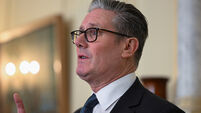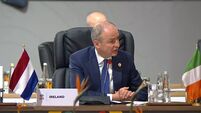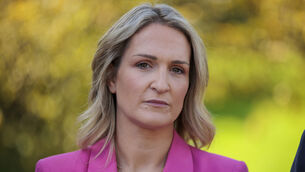Move to shore up electricity supply as move to renewables gathers pace

Figures from EirGrid show 43% of Ireland’s electricity last year came from renewable sources. The amount of electricity created by renewable sources rose from 36% in 2019, with wind generation accounting for the majority of the power. Picture: Larry Cummins.
Ireland’s electricity system was “extremely tight” this winter, the operator of the national electricity grid has said.
Steps are being made to ensure there is no supply interruption as the country moves towards more renewable sources, according to EirGrid's chief executive Mark Foley.
Figures from EirGrid show 43% of Ireland’s electricity last year came from renewable sources, surpassing the Government’s target of 40%.
The amount of electricity created by renewable sources rose from 36% in 2019, with wind generation accounting for the majority of the power.
However, Mr Foley said while data centres have delivered “enormous economic benefits”, they create the “additional challenge of greening the power system whilst accommodating very significant growth in demand for electricity”.
“Our system, as you all know, has been extremely tight this winter. We’ve had a confluence of circumstances between plants going offline, weather patterns with no renewables,” Mr Foley said.
“We’re engaged deeply with the Government and the CRU [Commission for Regulation of Utilities] to ensure the near-term and medium-term measures are put in place to ensure we don’t encounter an interruption to supply during winter and indeed during summer periods when we get low wind… as we transition to higher and higher levels of renewables.”
He added that “nothing would do more damage” to the State’s ambition to decarbonise electricity than “for our lights to go out and for people to start pointing fingers at renewables being increased”.
Mr Foley was speaking at Wind Energy Ireland’s annual conference, which looked at how Ireland could meet its renewables targets.
He said the primary goal of EirGrid was to transform the power system for future generations, and while that is easy to articulate, it is “demanding” to put into action.
“We need to connect about 10,000MW of renewables over the next decade, that’s twice what was delivered in the last 20 years,” he said.
“It will come from onshore wind, which has served us exceedingly well, it will come from solar and we will require upwards of 5,000MW of offshore wind, predominantly from the Irish sea.”
Speaking at the same conference, Paddy Hayes, managing director of ESB Networks, said the carbon intensity of electricity in Ireland had “effectively halved” between 2005 and 2019.
Mr Hayes said it was "incredible" that Ireland has accommodated high levels of renewables on a "weakly interconnected grid", but warned there would be a need for a “fundamental transformation" of the distribution system as renewable usage increases.
He acknowledged there could be some incidences in which required infrastructure – such as wind turbines and cables – meets opposition, but believes the key to ensuring community support is through engagement.
“It [community support] is probably one of the biggest challenges. Not just for the electricity industry but for all infrastructure, whether it’s roads or bridges or airport runways or whatever, it is the biggest challenge of all,” he said.
"I think the key is engagement. It’s about talking, it’s about listening and it’s about engaging and hopefully by talking to each other and listening to each other, we can find solutions that work for communities as well as for societies over all."










